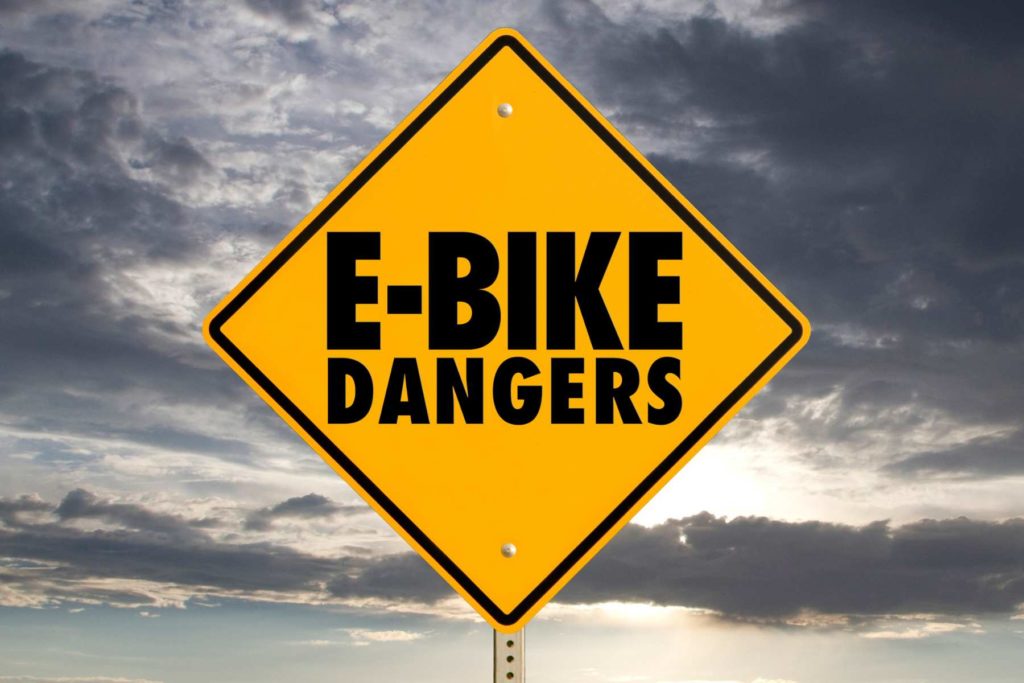E-BIKES:
A fun and potentially hazardous ride

Electric bikes, or e-bikes, are extremely popular for children and adults alike. They can be a lot of fun and get you from point A to point B, but are they safe? E-bikes are heavier and faster than traditional bikes, making them more difficult to control and more likely to cause an injury in a crash. In a recent UCLA study, using an e-bike is more likely to result in injury than using a motorcycle or car. Locally, pediatricians and other doctors are seeing potentially devastating injuries including head injuries, dental trauma, skin injuries, broken bones and internal organ damage. Here’s what you need to know about e-bikes:
What is an e-bike?
Electric bikes are like traditional bicycles but have a battery-powered motor. Under California law, e-bikes are classified into three categories:
- Type 1 is a low-speed pedal-assisted bicycle.
- Type 2 has a pedal and a throttle.
- Type 3 bikes can go up to 28 mph with pedal assistance. Type 3 e-bike riders must be at least 16 years old and wear a helmet.
Do you need a license or special registration to operate an e-bike?
E-bike operators do not need a driver’s license, registration or license plate but they must follow existing traffic laws. This creates a challenge for young riders who may not know the rules of the road.
Six tips to keep your teen safe on an e-bike:
- While there are no age limits for type 1 or type 2 e-bikes, young children may not be mature enough to understand the responsibility of using a motorized bike.
- Your child should have a basic understanding of the rules of the road before using an e-bike. You can look for courses via your local police department.
- Require everyone using the e-bike to wear a helmet while riding. Make sure the chin strap is fastened.
- Never allow your child to ride with more than one person per bike.
- Make sure your child is visible with bright clothing or bike lights.
- Ride along with your children and ensure they are employing safe riding habits prior to letting them ride unsupervised. Talk about specific routes to take and avoiding tricky intersections.

